Input interpretation

pyrophosphoric acid
Chemical names and formulas
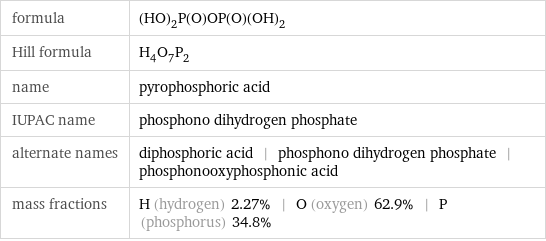
formula | (HO)_2P(O)OP(O)(OH)_2 Hill formula | H_4O_7P_2 name | pyrophosphoric acid IUPAC name | phosphono dihydrogen phosphate alternate names | diphosphoric acid | phosphono dihydrogen phosphate | phosphonooxyphosphonic acid mass fractions | H (hydrogen) 2.27% | O (oxygen) 62.9% | P (phosphorus) 34.8%
Lewis structure
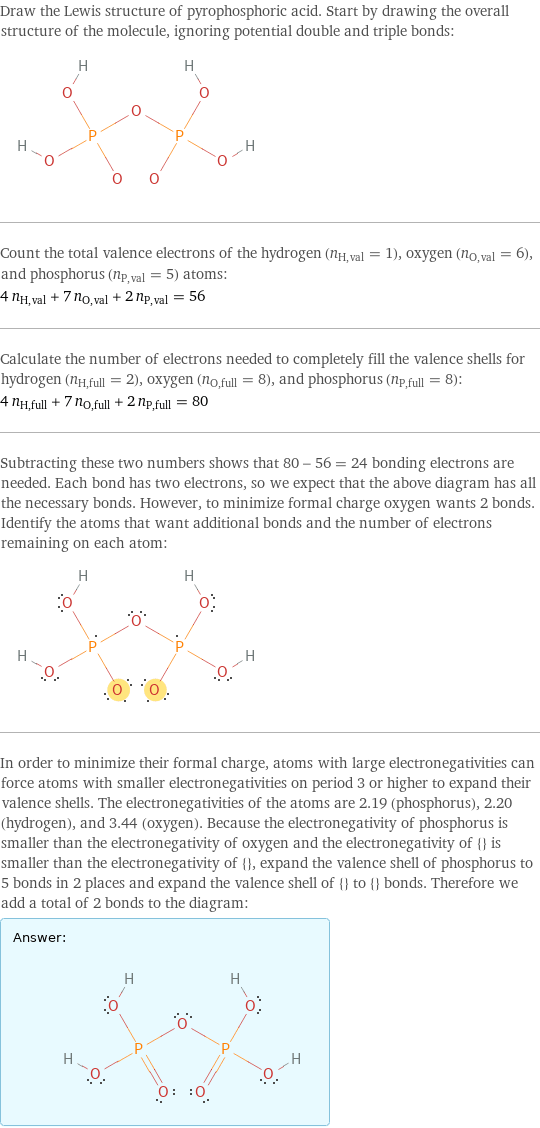
Draw the Lewis structure of pyrophosphoric acid. Start by drawing the overall structure of the molecule, ignoring potential double and triple bonds: Count the total valence electrons of the hydrogen (n_H, val = 1), oxygen (n_O, val = 6), and phosphorus (n_P, val = 5) atoms: 4 n_H, val + 7 n_O, val + 2 n_P, val = 56 Calculate the number of electrons needed to completely fill the valence shells for hydrogen (n_H, full = 2), oxygen (n_O, full = 8), and phosphorus (n_P, full = 8): 4 n_H, full + 7 n_O, full + 2 n_P, full = 80 Subtracting these two numbers shows that 80 - 56 = 24 bonding electrons are needed. Each bond has two electrons, so we expect that the above diagram has all the necessary bonds. However, to minimize formal charge oxygen wants 2 bonds. Identify the atoms that want additional bonds and the number of electrons remaining on each atom: In order to minimize their formal charge, atoms with large electronegativities can force atoms with smaller electronegativities on period 3 or higher to expand their valence shells. The electronegativities of the atoms are 2.19 (phosphorus), 2.20 (hydrogen), and 3.44 (oxygen). Because the electronegativity of phosphorus is smaller than the electronegativity of oxygen and the electronegativity of {} is smaller than the electronegativity of {}, expand the valence shell of phosphorus to 5 bonds in 2 places and expand the valence shell of {} to {} bonds. Therefore we add a total of 2 bonds to the diagram: Answer: | |
3D structure
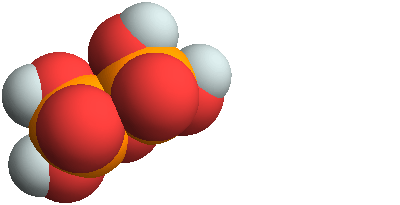
3D structure
Basic properties
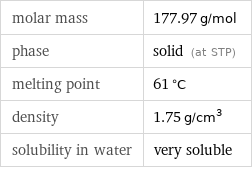
molar mass | 177.97 g/mol phase | solid (at STP) melting point | 61 °C density | 1.75 g/cm^3 solubility in water | very soluble
Units

Solid properties (at STP)

density | 1.75 g/cm^3
Units

Thermodynamic properties

specific heat of formation Δ_fH° | solid | -12.59 kJ/g molar heat of formation Δ_fH° | solid | -2241 kJ/mol (at STP)
Chemical identifiers
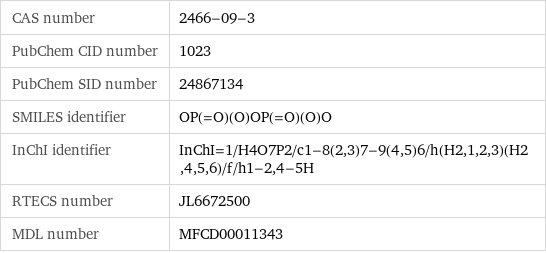
CAS number | 2466-09-3 PubChem CID number | 1023 PubChem SID number | 24867134 SMILES identifier | OP(=O)(O)OP(=O)(O)O InChI identifier | InChI=1/H4O7P2/c1-8(2, 3)7-9(4, 5)6/h(H2, 1, 2, 3)(H2, 4, 5, 6)/f/h1-2, 4-5H RTECS number | JL6672500 MDL number | MFCD00011343
Toxicity properties

RTECS classes | other